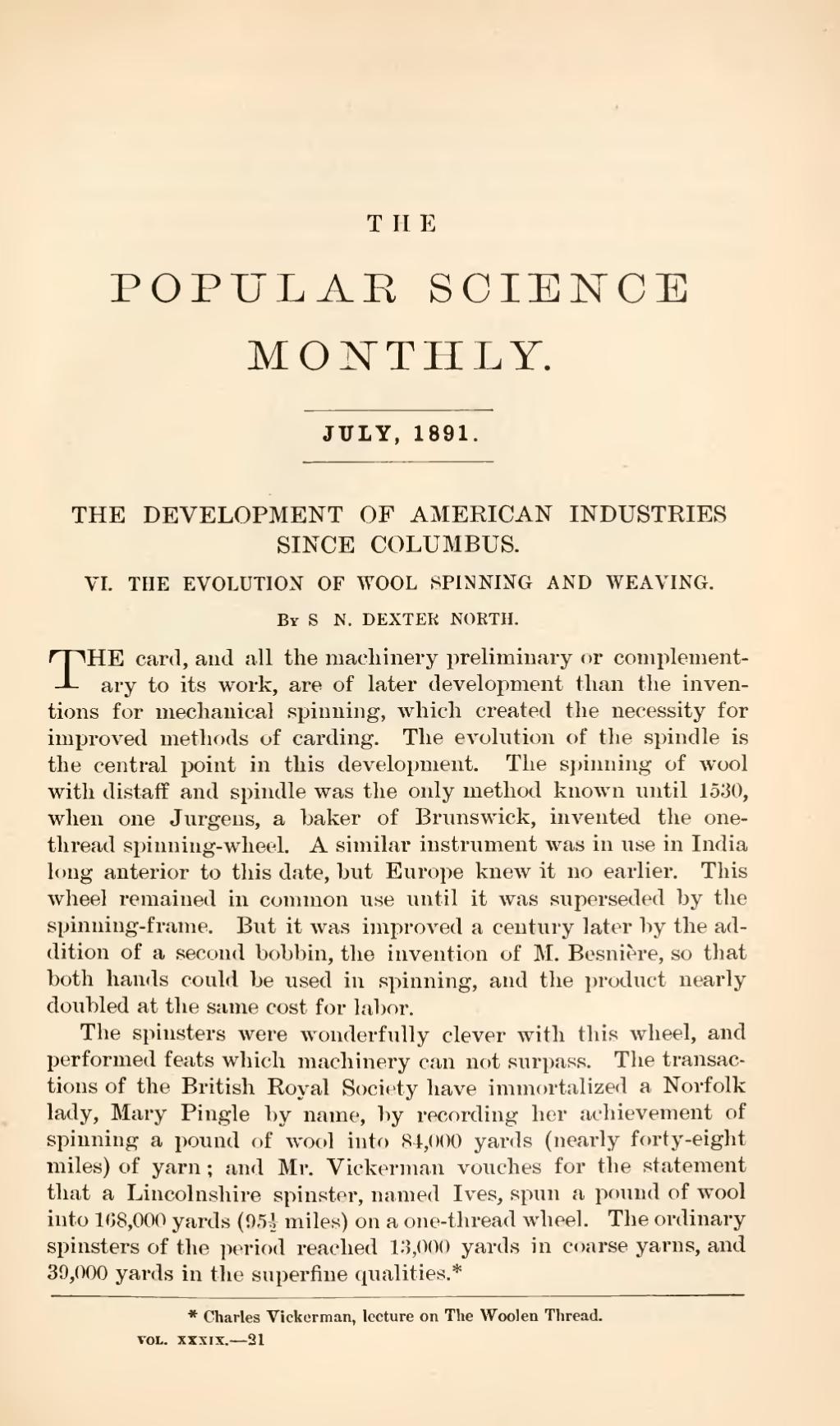THE
POPULAR SCIENCE
MONTHLY.
JULY, 1891.
| THE DEVELOPMENT OF AMERICAN INDUSTRIES SINCE COLUMBUS. |
VI. THE EVOLUTION OF WOOL SPINNING AND WEAVING.
By S N. DEXTER NORTH.
THE card, and all the machinery preliminary or complementary to its work, are of later development than the inventions for mechanical spinning, which created the necessity for improved methods of carding. The evolution of the spindle is the central point in this development. The spinning of wool with distaff and spindle was the only method known until 1530, when one Jurgens, a baker of Brunswick, invented the one-thread spinning-wheel. A similar instrument was in use in India long anterior to this date, but Europe knew it no earlier. This wheel remained in common use until it was superseded by the spinning-frame. But it was improved a century later by the addition of a second bobbin, the invention of M. Besnière, so that both hands could be used in spinning, and the product nearly doubled at the same cost for labor.
The spinsters were wonderfully clever with this wheel, and performed feats which machinery can not surpass. The transactions of the British Royal Society have immortalized a Norfolk lady, Mary Pingle by name, by recording her achievement of spinning a pound of wool into 84,000 yards (nearly forty-eight miles) of yarn; and Mr. Vickerman vouches for the statement that a Lincolnshire spinster, named Ives, spun a pound of wool into 168,000 yards (95| miles) on a one-thread wheel. The ordinary spinsters of the period reached 13,000 yards in coarse yarns, and 39,000 yards in the superfine qualities.[1]
- ↑ Charles Vickerman, lecture on The Woolen Thread.
